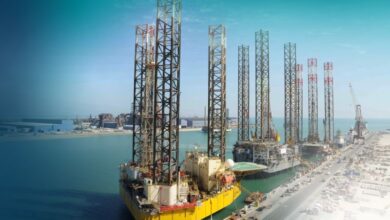New interface protocols drive communication efficiencies between subsea control modules and subsea sensors
The Subsea Instrumentation Interface Standardization (SIIS) network released its Recommended Practice and Standard Text for inclusion in API17F, the American Petroleum Institute’s (API) Standard for Subsea Production Control Systems. The three instrument interface protocols, covering analogue devices, digital serial devices and Ethernet TCP/ IP devices, will help improve subsea reliability by standardizing communications between subsea control modules and subsea sensors.
SIIS was established in 2003 with a remit to create an open standard for the benefit of the oil and gas industry as a whole. The new Recommended Practice and text for an API Standard is expected to improve communication between members and strengthen the subsea control system ‘community’, reduce project lead and delivery times, remove repeated one-time engineering costs, improve reliability and improve confidence for operators and vendors in equipment interoperability.
The interface protocols span three levels, the first being the Analogue Devices, or 4-20mA sensors – two-wire loop powered analogue output sensing devices.
The second level is Digital Serial Devices (CANopen), which are relatively complex sensors or instruments that have serial digital connections to the control system in a star connection style. The sensors can include multi-measurand devices that can be distributed on a multi-dropped topology. Digital Serial Devices can also include downloadable characteristics and, most importantly, be described as having Open Standard characteristics. The communication protocol uses CANopen (CiA 443) over an ISO 11898-3 (fault tolerant) physical layer. CiA cooperated with SIIS in the second level, and hosts the CiA 443 profile for subsea devices.
The third protocol level is the Ethernet TCP/ IP Devices, or interface specification for connecting Intelligent Subsea Devices to Subsea Production Control Systems using IP over Ethernet.
Interface trials between equipment from different suppliers, also known as a plugfest, were held for each level to demonstrate interoperability and validate the output of the JIP.
SIIS Steering Committee member Trond Bertmand, Statoil, Leading Engineer, said, “The SIIS standard has proven to be an important tool in recent years ensuring standardization and, at the same time, flexibility in the interface towards subsea sensors.”
Mike Baker, Networks Practice Leader at OTM Consulting, continued, “Having managed the JIP for the past 14 years, we’re extremely proud of what SIIS has achieved. Not only will the new protocols help improve communication efficiencies and reduce costs to the industry, but developing them has had the added benefit of improving communication between members as well as strengthening the relationship with the subsea control ‘community.'” Looking forward, Mr Baker said OTM will continue to explore requirements for additional Standards to address industry challenges.




